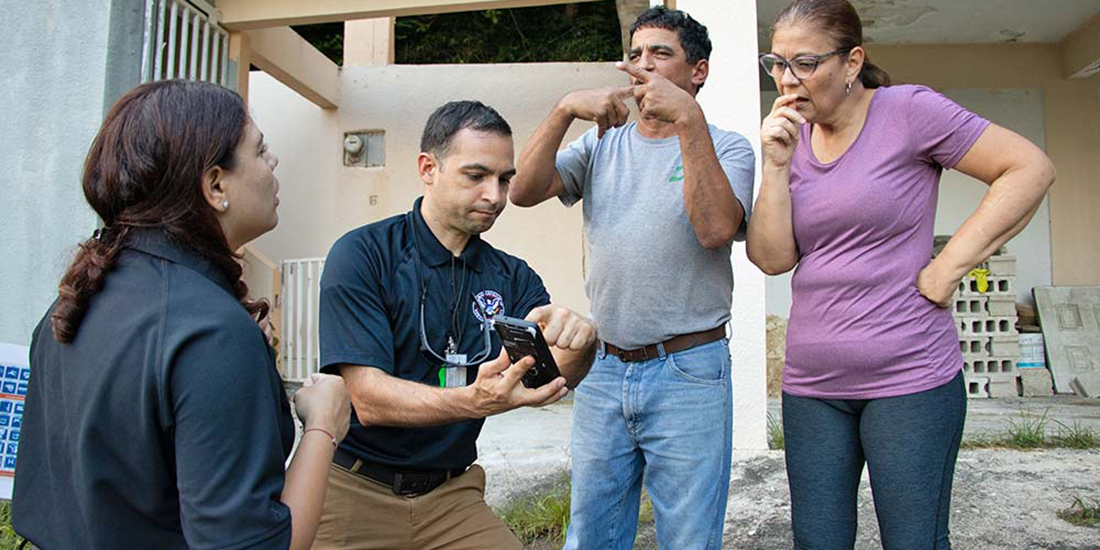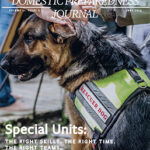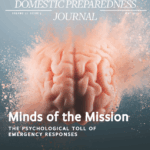Disaster survivors and responders are at risk of psychological hazards such as acute stress disorder, depression, and post-traumatic stress disorder (PTSD). These challenges intensify in communities where language barriers obstruct communication, delay aid, and magnify fear, compounding the chances for confusion in communication.
Three Common Scenarios
Scenario 1: During a fast-moving wildfire in Southern California, emergency alerts blared across English-language TV and radio, but Maria, a Spanish-speaking mother of three, did not understand them and stayed home until smoke filled her neighborhood. The firefighter who reached her door, pressured for time, shouted in English. Realizing too late that she had not understood the warnings and had no idea what was happening, the firefighter felt helpless. It took him twice as long to remove the family from their home.
Scenario 2: When flooding hit a small New Jersey town, a police officer tried to direct a Mandarin Chinese–speaking family to safety through their 10-year-old daughter, who misunderstood the instructions under pressure. The officer, already coordinating multiple rescues, grew frustrated and fearful as precious minutes were lost trying to re-explain directions in a language the family did not understand.
Scenario 3: After a hurricane devastated parts of Houston, an elderly Vietnamese couple could not explain their medical needs at the shelter and were placed in the general population, where the husband went without insulin for two days. The nurse on duty, overwhelmed by dozens of incoming evacuees, felt helpless and angry that no interpreter had been provided for critical triage.
Language gaps can exacerbate psychological hazards, specifically for communities with limited English proficiency (LEP) and English-only responders. Foreign-born survivors with past trauma face unique vulnerabilities in a disaster, including mistrust of government officials. With a formal and structured community-based “multilingual corps” responders can improve resilience before, during, and after emergencies, and align with the concept of “whole community”—the meaningful participation of all stakeholders in a community.
Psychological Hazards and Past Trauma
Psychological hazards in disaster settings include acute stress reactions, compassion fatigue, and vicarious trauma, which can impair decision-making, reduce empathy, and lead to burnout among responders. English-only frontline workers and volunteers who lack language access tools often face heightened stress when unable to communicate effectively with non-English speakers, including those who are deaf or hard of hearing. All individuals, including those with LEP, should have language access to ensure that they obtain information and services in their preferred language at the same level as individuals who do not have those barriers.
Compounding a limited ability to communicate, responders may experience moral distress—that is, knowing what should be done but feeling unable to do it due to communication barriers. Such distress can accumulate over repeated calls, increasing the risk of chronic stress and eventual PTSD among responders.
In addition, the chaos that ensues in disaster scenes—blaring sirens, shouted evacuation orders, people scrambling for safety, etc.—can overwhelm anyone’s capacity to cope. In these moments, clear communication can be the difference between reassurance and panic and, ultimately, between life and safety or death.
For non-English speakers, an inability to understand instructions or ask for help increases stress and fear, intensifying a sense of invisibility, not just during the onset of the disaster, but also once in shelters or evacuation centers. Under extreme stress, even those with some command of English may revert to their native language, impairing or challenging comprehension and the ability to reply in their second language—English. Not knowing how to act safely can endanger individuals with LEP themselves and also those around them.
Many foreign-born residents with LEP have experienced trauma in their homelands, such as war, displacement, famine, or catastrophic natural disasters. These communities often have a dual vulnerability: the stress of the current disaster and the psychological residue of past upheaval. For these individuals, new emergencies in their adopted homes can reawaken past experiences that trigger symptoms of PTSD. For someone reliving trauma from past conflicts, hearing instructions in their native language can ground them and reduce cognitive load.
In this author’s more than twenty-five years of work as a behavioral health Spanish interpreter in the U.S., foreign-born patients who receive outpatient or inpatient therapy, and who have LEP and PTSD, have reported intense flashbacks of civil war gunfire triggered by sounds of raindrops on a metal roof, or acute panic during hurricane alerts rooted in recollections of collapse and chaos in an earthquake in their homeland. The language barrier is, therefore, augmented by this double psychological hazard, adding a complex layer to effectively managing disaster communication and response.
A New Framework: The Multilingual Corps
Addressing these intertwined psychological hazards requires more than piecemeal translation efforts, the use of ad hoc interpreters or bilinguals, or sole reliance on inaccurate translation apps. It involves taking the whole community concept from theory to practice—that is, taking local ownership of disaster communication to those of any language group, to mitigate safety miscommunication and medical error for all stakeholders involved.
While large language models have emerged as impactful tools for disaster communication for community-wide message broadcast—with human translators acting as accuracy monitors—they are not appropriate for personal-level disaster communication, which requires fast, specific verbal interactions. AI-powered text-to-speech and speech-to-text systems cannot control for background noise (interference), local colloquialisms, or an accent, and can create escalating ineffective communication. Examples of this include calling a bank or hospital’s 800 number and having to repeat oneself multiple times or speaking into a translation app and needing to repeatedly state a phrase that needs to be translated. Both of these scenarios are untenable in a disaster setting.
Bilingual communication should mirror English-only communication, maximizing bilingual resources such as interpreters and translators for critical disaster preparedness, response, and recovery, using artificial intelligence only as a tool. Population language data should drive decision-making, ensuring that resources are deployed where the need is the greatest.
The multilingual corps (MC) model that this author proposes involves local and state government agencies recruiting and training multilingual and bicultural individuals across a community’s ecosystem—teachers, healthcare aides, soccer coaches, nonprofit specialists, etc.—who are trusted individuals, deeply embedded in their communities, and who already possess language and culture-specific skills. MC members are not volunteers. Like many others who work in the disaster arena, they are hired contractors who serve during community disaster preparedness activities by liaising with non-English speakers, and who are activated when disaster strikes to support on-the-ground disaster response and recovery communication efforts.
Recruitment and Training
Potential MC members can be recruited through intentional efforts such as a local mainstream and social media campaign, job posts, and referrals. Partnerships with community-based organizations that serve groups with linguistic differences are also a viable option, but it is important to note that they should not be considered the only or main recruitment option.
Minimum candidate qualifications should include
- Documented proficiency in both English and at least one non-English language relevant to the local population;
- Understanding of community norms and cultural practices;
- Willingness and availability to commit to training and, where applicable, to a background check; and
- Preferably, interpreting experience.
Once recruited, MC members would undergo two phases of cross-training. Below are some of the main items to include in each phase:
Phase 1:
- Disaster Management Overview: foundations, stages, and disaster response protocols
- Trauma-Informed Communication: strategies to avoid re-traumatization
- Responder Self-Care: vicarious trauma, personal care toolkit, and peer debriefing
Phase 2:
- Interpreter Foundations: standards and ethical considerations during the phases of a disaster
- Roles and Meaning Transfer: role technique, units of meaning, and managing flow
- Simulations: practice with feedback
Roles, Deployment, and Long-Term Recovery
In an active incident, MC members serve as liaisons at key points:
- Shelters and evacuation centers: conduct registration, explain procedures, and comfort survivors
- Disaster site triage: facilitate consent discussions, medical histories, and pain assessments
- Community educators and outreach: distribute multilingual materials, support Q&A sessions, share critical updates, and gather feedback on unmet needs
- Mental health clinics: support the provision of in-language group debriefings, stress management workshops, and referrals to long-term care.
As mentioned above, MC members should be recruited and hired by local and government agencies. The MC Corps can also serve for other stand-alone or ongoing engagements provided by local and state agencies, such as health fairs, town halls, and community outreach drives, among others.
Deployment of MC members should be coordinated through local and state government emergency management agencies to ensure clear lines of supervision and integration into command systems.
MC members can continue to play a vital role during the long-term recovery phase by supporting community-based mental health programs such as
- Peer support groups in multiple languages to offer shared reflection and recovery
- Mobile mental health clinics to provide culturally familiar assessments and therapies
- Telehealth services to connect survivors with licensed therapists who speak their language
Post-disaster evaluations, assisted by MC members, should track psychological outcomes among survivors with LEP. Advisory groups composed of multilingual residents should review findings, improve planning, and help recruit new MC members.
Skills Development and Building Belonging for Resiliency
The difference between being bilingual (or multilingual) and being an interpreter is often misunderstood. Bilingualism is a highly developed skill—like knowing how to drive a regular car. Being an interpreter is more like knowing how to drive a tractor-trailer. The additional training—upskilling—is needed in order to accurately and effectively transfer meaning in a live conversation, especially in a disaster setting where time is of the essence and emotions run high.
Disasters challenge a community’s mental strength, especially when language creates a barrier to understanding, comfort, or support. But language could instead be a bridge. The MC model
- Turns linguistic differences into an emergency management asset, not a barrier;
- Creates visibility and leverages the connection, trust, and lived experience of local bilingual residents to address psychological hazards head-on; and
- Fosters pride in communities that often experience language barriers, further developing a sense of belonging to their city or town of residence that can promote two-way accountability.
When paired with smart planning and community partnerships, this model ensures no one is left behind—linguistically and emotionally—when disaster strikes.

Diana Sanchez-Vega
Diana Sanchez-Vega is a twice nationally certified Spanish medical interpreter with an M.A. in psychological studies and a B.S. in international business. A native Argentinian, she is fluent in Spanish and English and well-versed in Portuguese and French. She is the founder and CEO of Sanchez-Vega Communications and has a 35+-year track record developing multilingual cultures in linguistically diverse industries such as construction, disaster management, and healthcare. She trains bilingual staff, manages a multilingual translator team, interprets at international meetings, and speaks at conferences. She is a resident of Nashville, Tennessee.
- Diana Sanchez-Vegahttps://www.domesticpreparedness.com/author/diana-sanchez-vega






